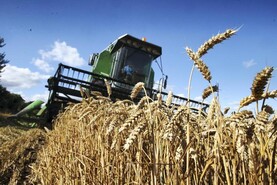Over the years, Irish farmers have been well served by a model where agricultural policy and farm practices have been closely guided and informed by independent research. The strength of the model was based on lab- and plot-based research findings being transferred into demonstrable research that, over a period, proved the robustness of the technologies at farm level.
It is a long process and one where success is ultimately based on those setting the research agenda having the capacity and vision to identify the problems and challenges of the future. Today’s research agenda should not be trying to solve the problems of today. It should be focused on developing technologies to solve problems that are not yet on the radar of farmers or the wider farming industry.
If we measure the delivery of research against this barometer, then clearly there are challenges – particularly when it comes to dealing with the environmental issues now in front of farmers and some of the challenges associated with dairy expansion. The simple question is whether the research agenda has delivered policymakers and farmers a suite of proven and demonstrable technologies that allows these challenges to be overcome while protecting farm incomes.
The impact of the reduction in chemical N being proposed at current farm stocking rates is relatively untested outside of a research environment
A big bet is being placed on clover as one of the central solutions for reducing gaseous emissions. A target to reduce chemical nitrogen use by 20-30% is seen as achievable on the back of research indicating the potential to significantly replace fertiliser N by biological N fixation.
There is no disputing the volumes of research to support a policy shift in this direction and the potential financial and environmental dividends. But there is a clear gap as to the extent to which the capacity of this research has been widely demonstrated at farm level on a sustained basis – taking into account land type and management practice, and the impact of adverse weather conditions. The impact of the reduction in chemical N being proposed at current farm stocking rates is relatively untested outside of a research environment.
Protected urea
It is a similar scenario in the case of protected urea, also seen as an essential technology in reducing gaseous emissions. Within the context of trial plots, the technology is well proven and many farmers are happy with performance. But questions have been asked as to whether a technology that has yet to be demonstrated and have its impacts assessed over a prolonged period of use should be forming such a central part of national policy.
There are also examples where in the development of new technologies, research – rather than being ahead of farmers and industry – appears to be playing catch-up. The most evident being where the precise measurement of carbon sequestration through soils and hedgerows has been pioneered by Devenish Nutrition with the national research agenda only now getting into gear three to five years later.
We see a similar approach in lack of a scientific direction being given to Government questioning the role of methane as a greenhouse gas. Despite being one of the most pressing issues facing Irish farmers, we have depended on international research to inform this debate. Similarly we look to international research on the role of new technologies in supressing methane emissions from ruminants.
Playing catch-up
At farm level, the research agenda is clearly playing catch-up in developing a viable dairy beef system. The research agenda of 10 years ago failed to identify the need to influence breeding programmes on dairy farms to deliver progeny of suitable beef merit in a post-quota era. Similarly, new technologies such as multi-species swards have largely been pioneered by progressive farmers taking a leap of faith rather than being guided by research.
However, the point is not to criticise but instead reflect the pressure that is now being placed on research to identify almost immediate solutions to problems as they arise. We cannot ignore the dangers of a situation where research is validating rather than shaping Government policy. Forming policy or shaping technical production blueprints on research findings that have not been widely demonstrated is playing fast and loose with farmer livelihoods.
Debate required
A positive debate with input from farmers is needed on how best to protect, develop and focus farm-based research into the future. It is one that should recognise the value of Teagasc research to the farming community over the years and its critical role in the future. But at the same time explore the extent to which an ever-growing list of demands being placed on Teagasc by the State and others plus the direction of research funding programmes has distracted from and/or diluted resources being applied to farm-based research.
We must take the necessary steps to ensure that the research agenda of today refocuses on delivering demonstrable technologies aligned to addressing the issues that farmers will be facing in 2030 and beyond.






 This is a subscriber-only article
This is a subscriber-only article










SHARING OPTIONS: